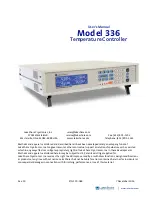
LR3D Technical Manual
Section F
Rev. IR (5/13/2020)
Instructions for Continued Airworthiness
B&C Specialty Products
Page F - 1
bandc.com
INSTRUCTIONS FOR CONTINUED AIRWORTHINESS
The B&C LR3D-14 and LR3D-28 regulators require no recurrent maintenance and have an
indefinite service life. At each annual condition inspection, check the regulator externally for
security of mounting, tightness of terminal screws, and chafing or breakage of wiring. Perform
an operational check to determine that the regulator maintains the aircraft electrical bus at its
approximate set point as loads are added and removed (at high loads, cruise RPM may be
required).
Failure due to broken wires or damaged connectors may be corrected in the field using repair
procedures complying with the latest revision of AC43.13-xx. Use only nylon-insulated PIDG
wire terminals and M22759/16 Tefzel wire for repairs to the LR3D connecting harness. All
repairs to the LR3D are by factory service or replacement only.
Field adjustment of the regulated voltage may be accomplished by accessing the precision
adjustment potentiometer located under the round black cap on the side of the LR3D enclosure.
A small flat-blade screwdriver may be used for the adjustment; clockwise rotation increases the
set voltage at a rate of 0.2V per full turn (LR3D-14) or 0.4V per full turn (LR3C-28).
The integrated Over-Voltage (OV) protection function is set at a non-adjustable 16.25V (±
0.25V) on the LR3D-14, and 32.5V (± 0.5V) on the LR3D-28. A 5A circuit breaker or fast-
acting fuse is required between the aircraft bus and pin 6 of the LR3D for this functionality to
operate.
The Low-Voltage (LV) warning output is fixed and non-adjustable, and will activate between
12.7V and below (LR3D-14), or 25V and below (LR3D-28).
INSTALLATION OF THIS UNIT ON A TYPE-CERTIFICATED AIRCRAFT
MUST BE ACCOMPANIED BY AN STC OR BY A ONE-TIME FIELD APPROVAL

































